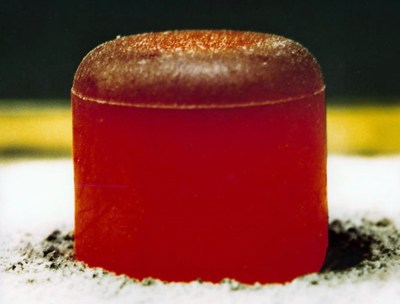On the face of it, powering most spacecraft would appear to be a straightforward engineering problem. After all, with no clouds to obscure the sun, adorning a satellite with enough solar panels to supply its electrical needs seems like a no-brainer. Finding a way to support photovoltaic (PV) arrays of the proper size and making sure they’re properly oriented to maximize the amount of power harvested can be tricky, but having essentially unlimited energy streaming out from the sun greatly simplifies the overall problem.
Unfortunately, this really only holds for spacecraft operating relatively close to the sun. The tyranny of the inverse square law can’t be escaped, and out much beyond the orbit of Mars, the size that a PV array needs to be to capture useful amounts of the sun’s energy starts to make them prohibitive. That’s where radioisotope thermoelectric generators (RTGs) begin to make sense.
RTGs use the heat of decaying radioisotopes to generate electricity with thermocouples, and have powered spacecraft on missions to deep space for decades. Plutonium-238 has long been the fuel of choice for RTGs, but in the early 1990s, the Cold War-era stockpile of fuel was being depleted faster than it could be replenished. The lack of Pu-238 severely limited the number of deep space and planetary missions that NASA was able to support. Thankfully, recent developments at the Oak Ridge National Laboratory (ORNL) appear to have broken the bottleneck that had limited Pu-238 production. If it pays off, the deep space energy crisis may finally be over, and science far in the dark recesses of the solar system and beyond may be back on the table.
Hot and Ready
The development and use of RTGs for space missions closely parallels the build-up of space programs in the middle of the previous century. The first RTG was invented in 1954 in the “Atoms for Peace” era of efforts to find non-destructive ways to harness the power of the atom. The promise was great; essentially unlimited power with no moving parts, that could be scaled up or down to fit a huge range of applications, from powering remote terrestrial applications like lighthouses and remote weather stations to running implantable pacemakers with a power source that would outlive the patient.
It would not be until 1961 that the first RTG would go to space, aboard a Navy navigation satellite. The first of the deep-space missions to sport RTG power were the Pioneer missions in the early 1970s, which paved the way for the ultimate test of the RTG: Voyager 1 and Voyager 2. Each of those spacecraft uses three RTGs containing 4.5 kg of Pu-238, producing 480 watts of total power per vehicle at launch. More than forty years later, the RTGs are still working, their output greatly diminished by the …read more
Source:: Hackaday

